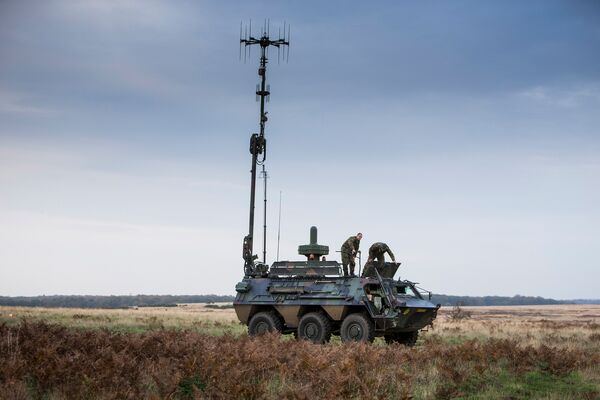
The Netherlands is to replace its outdated mobile EW capabilities, including from the Fuchs-EOV (pictured). (Netherlands Ministry of Defence)
The Royal Netherlands Army is modernising it mobile electronic warfare (EW) capabilities under the Joint Electronic Attack project.
According to the Netherlands Ministry of Defence (MoD), the in-service Fuchs-EOV EW vehicles are technically and operationally obsolete, with several components either no repairable or available. This leads to higher operating costs and reduces deployability, the MoD noted. Boxer armoured vehicles will be acquired and fitted with new electronic attack (EA) equipment to replace the Fuchs-based capability. The army operates 200 Boxers in other roles.
The Dutch Defence Materiel Organisation is to lead the ‘Joint Electronic Attack project, which is expected to cost EUR100–250 million (USD108-270 million). Beginning this year, the project will be completed in 2029, with the first systems planned to be delivered to the Dutch Army Command from 2027, the MoD said.
The newly acquired EA platforms will have the ability to protect the army's operational intelligence and command-and-control systems while also jamming, neutralising, misleading, or manipulating an adversary in the electromagnetic spectrum, according to the MoD. They will also be able to perform new tasks in the cyber electromagnetic domain.
Germany has noted a requirement for updated EA capabilities, and the Netherlands MoD plans to work with its counterparts on the project.
Fuchs-EOV vehicles are in service with the 102 EOV Company, which is part of the Joint ISTAR Command. The MoD notes that they are capable of conducting electronic intelligence operations and jamming radio communications. The Netherlands took delivery of 24 Fuchs-EOV vehicles with the first entering service in 1989, a number have been converted for the nuclear, biological, and chemical reconnaissance role.
Looking to read the full article?
Gain unlimited access to Janes news and more...



